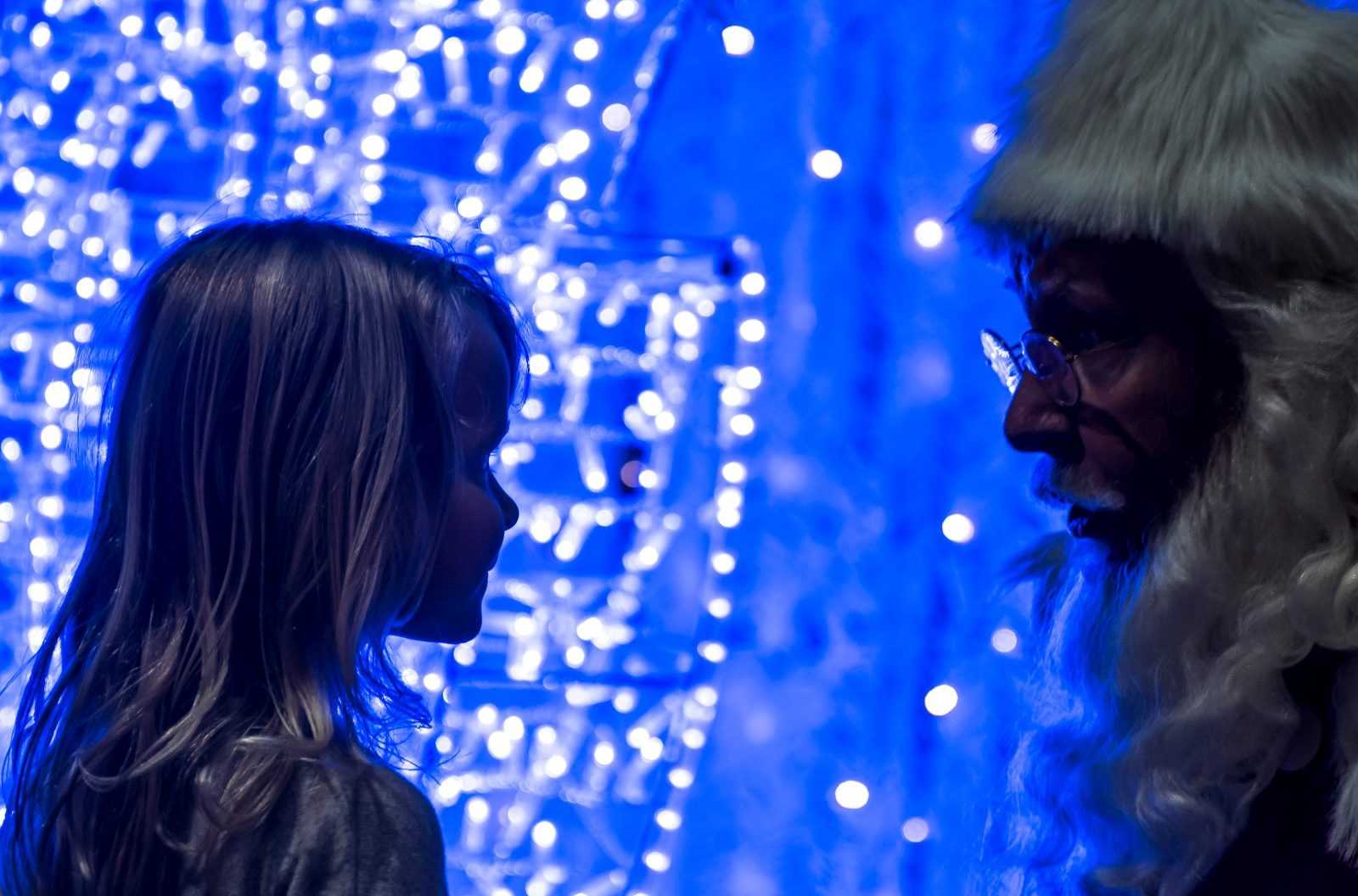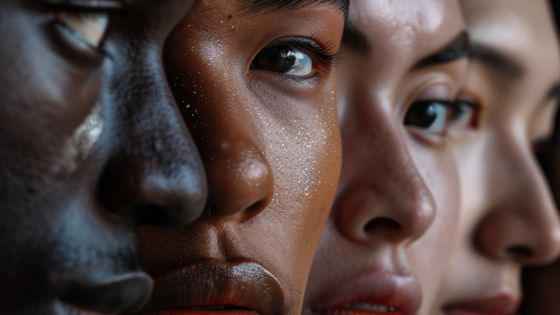on
BY SIMONE J. SMITH
I like anything that is going to get a reaction and bring people together, and Glow definitely does that. Even if you are not a Christmas person, all the holidays involve lights, and this is what brings you the magic.” Jackie English
I had no idea what to expect when I pulled up at the Toronto Congress Centre located at 1020 Martin Grove Rd, Etobicoke. My partner in crime Trish Browning was supposed to come with me that night, but she opted out, so when I actually got to see what Glow was all about, I had to video call her to let her see exactly what she was missing out on.
When I arrived, I was greeted warmly by Michèle Newton, Director, Konvo Media, and Kezia Royer; they provided me with drink tickets (yes, it is an adult party too) and I was escorted into the V.I.P. section where they provided light delicacies and scrumptious provisions. I made my way to the V.I.P. lounge, and just gazed around in awe; there were children laughing, adults strolling, and people actually glowing under the twinkle of a million lights. It is one of the most instantly gratifying experiences that you will have. I saw children playing in the brightly lit playgrounds, and the parents all seemed relaxed. It must have been the licensed bar, seasonal beverages that were being served, and the life music coming from the beautifully lit stage.
Before I started my stroll through this Winter Wonderland, I had an opportunity to chat it up with Jackie English who has a background in performance, producing, film/stage entertainment, and who is directly involved in the production of Glow In Toronto, 2019. “The theme this year is finding Santa’s hidden presents,” Jackie tells me. “Visitors are given a passport, which makes it an interactive experience. They visit different exhibits in Glow, and find hidden treasures. Glow offers something for everyone; the children get to play and adults get to relax a little, and take in some amazing live entertainment. This year we even have some Disney characters walking around. “Yes,” I said nodding, “I actually saw Cinderella walk by.” “Yes you did,” Jackie continued, “You will even see Belle around occasionally. I don’t know if you noticed, but Glow can be a romantic date night as well. We have had engagements here, and even weddings.”
I was thankful for my brief chat with Jackie, because it better prepared me for what I was going to experience once I started walking through. “The creators of Glow are a family named the Jansen’s. They have deep roots within their community and wanted to find a way to connect families and neighbours, and what better way to celebrate the warmth of the season then with five million lights. Glow actually started in a greenhouse, and it grew and grew until now, you can find them in: Ontario, Ottawa, in the USA, three or four locations out west, and even in Denmark. Please, go take a look around and get lost in the festivities,” Jackie concluded, and that is exactly what I did.
Walking through Glow definitely made me feel like a kid again. I took a selfie in the hanging lights, and had fun trying to take a picture in the hanging picture frames. I walked slowly through the light tunnel (while sipping on a glass of white wine), and watched children joyfully swoop, jump and tap to change colours on the LED swings, and lit up hopscotch board. I was almost tempted to join in, but I realized how silly I would look, plus I would spill my wine.
As I continued my journey, I ran into the Glow Vendor Market, which houses about 30 vendors and artisans showcasing one-of-a-kind handcrafted items that can only be found there. I visited (and had to resist from buying): Marley Coffee, Lip Lady Canada, Sweet Seduction & Cobblestone Foods Inc, Karizma, Laborde Jewelry, Sue B Designs, Anna Marie’s ABC’s (for my students), and Reiners Orginals. I also stopped by to see children taking their photos with Santa (he was actually there), and I learned that 100% of the proceeds from the photos would go to support local charities. I found out that they have another great initiative; Glow organizers understand how expensive the holiday season can be, so they are giving away up to 1,000 FAMILY PASSES to help those who can’t otherwise afford to experience Glow.
Bring together the people you love to stroll, laugh, drink, and play under the twinkle of a million lights from November 28th, 2019 through January 4th, 2020. For more details and ticket information, you can visit Glow at www.glowgardens.com/, or Connect with Glow on:
Web: www.glowgardens.com
Facebook: @GlowTorontoON
Twitter: @GlowGardensTO
Instagram: @glow_toronto
Stay in the loop with exclusive news, stories, and insights—delivered straight to your inbox. No fluff, just real content that matters. Sign up today!
We, as humans are guaranteed certain things in life: stressors, taxes, bills and death are the first thoughts that pop to mind. It is not uncommon that many people find a hard time dealing with these daily life stressors, and at times will find themselves losing control over their lives. Simone Jennifer Smith’s great passion is using the gifts that have been given to her, to help educate her clients on how to live meaningful lives. The Hear to Help Team consists of powerfully motivated individuals, who like Simone, see that there is a need in this world; a need for real connection. As the founder and Director of Hear 2 Help, Simone leads a team that goes out into the community day to day, servicing families with their educational, legal and mental health needs.Her dedication shows in her Toronto Caribbean newspaper articles, and in her role as a host on the TCN TV Network.












